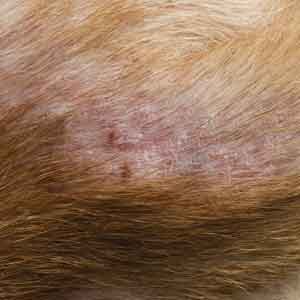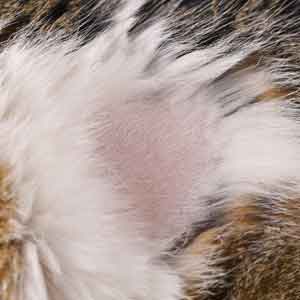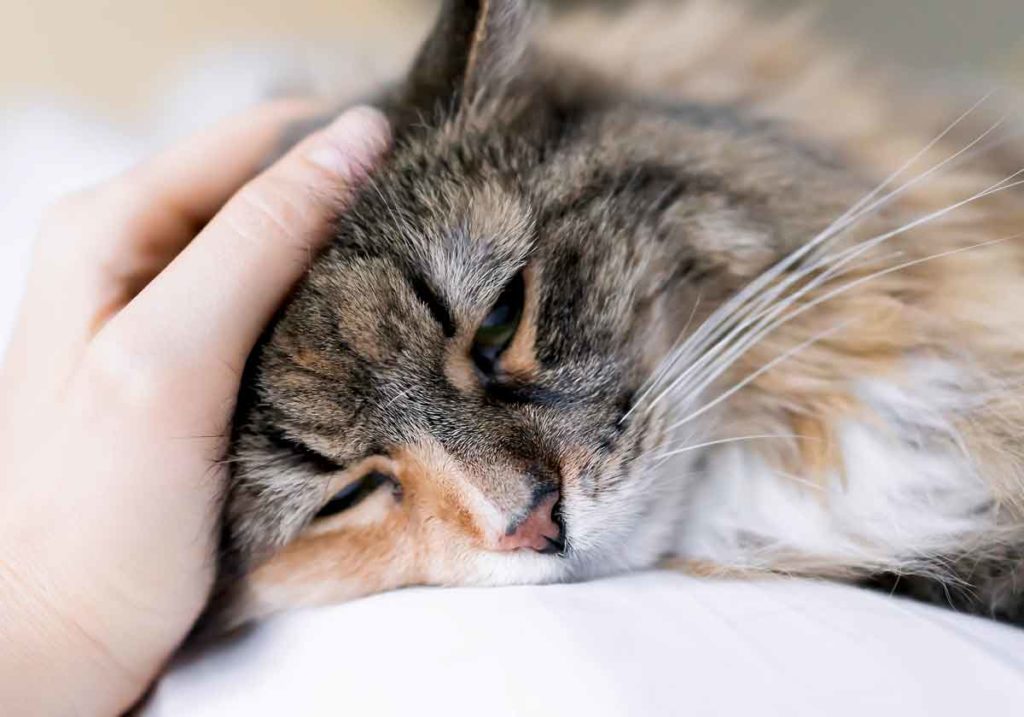Does your cat have a bald patch or even multiple bald areas on its body? Most cats naturally shed fur, but more significant hair loss can be concerning.
Bald areas on your cat’s body can look different depending on the underlying cause. There can also be scabs or skin irritation where there used to be hair.
Table of contents

Understanding Alopecia in Cats
When referring to hair loss in cats, the term alopecia is often used, which simply means baldness. There are different types of alopecia in cats. The most common causes of alopecia usually occur because of an underlying condition and are considered acquired alopecia.
However, alopecia can sometimes occur without an underlying condition present. For example, some cats, such as Sphynxes, have hereditary alopecia–they are born without hair and never grow any. Siamese cats often experience pinnal alopecia, which is hair loss on the outside of the ear pinnae that usually grows back on its own. Many different breeds of adult cats experience preauricular alopecia, which is the thinning of hair between the ears and eyes. Preauricular alopecia is considered normal and not due to an underlying illness.
Causes of Hair Loss in Cats
Cats can lose patches of hair as the result of a variety of different underlying conditions. Determining the cause of the hair loss will help your veterinarian decide the best treatment options for your cat.
Parasites
Mites, ticks, fleas, and lice can cause irritation that might make your cat scratch and lick themselves more than normal, resulting in bald spots. It’s important to note that some cats are allergic to the antigens in flea saliva, which further compounds the irritation caused by parasitic pests.
Stress and Anxiety
Cats experiencing stress or anxiety will often overgroom themselves as a coping mechanism. This can result in baldness, especially on the belly, legs, and sides. Hair loss because of stress or anxiety is also referred to as psychogenic alopecia by veterinarians.

Allergies
Allergies are a common cause of hair loss in cats. Dust, pollen, food, insect bites, and even medication allergies can cause itchiness, and cats may lick and scratch themselves more than normal to experience relief. This excessive licking and scratching can create bald spots in their fur.
Skin Infections
Alopecia in cats can also be caused by skin infections such as ringworm. Rings of missing hair caused by ringworm, a fungal infection common in cats, are usually found on the head, back, or behind the ears.
Pain
Itchiness is not the only sensation that may cause your cat to lick itself. Your cat may lick itself excessively to soothe the pain. For example, cats with arthritis or injury may try to relieve the discomfort by overgrooming those areas, sometimes resulting in bald patches.
Endocrine Disorders
Your cat’s endocrine system is responsible for balancing hormones that are vital to its health. When an endocrine disorder such as hyperthyroidism is present, the hormone imbalance can cause your cat’s hair to become thin and brittle, resulting in bald patches.
Treatment for Hair Loss in Cats
Autoimmune Diseases
Autoimmune diseases can cause hair loss in cats. Some autoimmune diseases can cause hair follicles to die, resulting in baldness.
If your cat is experiencing hair loss of any kind, it’s important that you consult your veterinarian. Once your veterinarian determines the cause of the hair loss, they will be able to recommend the best treatments for your cat.
Antianxiety and Antidepressant Medications
When your cat’s hair loss is caused by stress or anxiety, your veterinarian may prescribe antianxiety or antidepressant medication. These medications can help address psychogenic alopecia caused by overgrooming.
Antihistamines
If your cat is experiencing hair loss because of an allergy, your veterinarian may prescribe antihistamines to reduce the severity of your cat’s allergic reaction. You should also eliminate the source of the allergen if possible.
Topical Treatments
If your cat’s hair loss is caused by fungal infections, parasites, or certain skin conditions, your veterinarian may prescribe topical creams as an effective treatment. As always, you should also keep your pet on consistent tick and flea control medication.
For most cats, hair loss isn’t serious and is easily treatable. However, if you notice that your cat is losing hair, you should consult your veterinarian as soon as possible. Early treatment can help your cat’s hair grow back faster and keep their skin healthy.
Your cat will most likely recover from alopecia once the underlying condition is addressed. However, if hair loss is permanent, it’s important to follow up with your veterinarian regularly to make sure your cat’s skin stays healthy since it no longer has its protective fur in the affected area.











